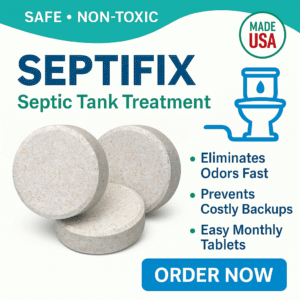If you use a salt-based water softener, you face a key choice: pellets or crystals. Your decision affects salt dissolving speed, maintenance, efficiency, and cost.
Why Your Choice Matters in 2025
The global market for softener salt hit about USD 1.5 billion in 2024 and is growing steadily—projected to surpass USD 2.1 billion by 2033 at ~4.2% CAGR and Salt materials landscape matters more now than ever :contentReference[oaicite:1]{index=1}.
Manufacturers refine grain sizes and purity to reduce maintenance and improve performance. That makes knowing pellets vs crystals essential if you want the best performance and least hassle.
What Are Crystals and Pellets?
Crystal Salt
Salt crystals, also called solar salt or evaporated salt, consist of small granules. They dissolve quickly, making them ideal for older, gravity‑fed systems :contentReference[oaicite:2]{index=2}.
Crystals often contain impurities. You’ll need more maintenance to prevent sludge (called mushing) or salt bridging in the tank :contentReference[oaicite:3]{index=3}.
Pellet Salt
Salt pellets are refined, compressed sodium chloride. They come in uniform, cylindrical shapes. You get higher purity, slower dissolution, and minimal residue buildup :contentReference[oaicite:4]{index=4}.
They cost more but reduce bridging and thus cut maintenance needs—especially in compact systems like cabinet-style units :contentReference[oaicite:5]{index=5}.
Pellets vs Crystals: Detailed Comparison
| Feature | Salt Crystals | Salt Pellets |
|---|---|---|
| Cost | Lower-cost, budget friendly | Higher-cost, more refined |
| Dissolution Speed | Dissolves quickly | Slow and steady |
| Maintenance | Prone to bridging and mushing | Resists buildup, less cleaning |
| Purity | Lower purity, more impurities | Higher purity, minimal residue |
| System Type Fit | Works well in traditional twin‑tank systems | Ideal for all-in-one or cabinet-style units |
| Suitability for Water Usage | Good for moderate to low use | Better for medium to high consumption homes |
When to Use Crystals
- You have a traditional or gravity-fed softener.
- Your water usage is low.
- You want to spend less on salt.
- You don’t mind occasional maintenance to clear salt bridges or sludge.
Crystals dissolve fast. But be ready to break up hardened salt or flush sludge occasionally :contentReference[oaicite:6]{index=6}.
When to Use Pellets
- You operate a cabinet-style or all-in-one system.
- You consume a lot of softened water.
- You want reliable performance with minimal upkeep.
- You’re fine paying a bit more per bag.
Pellets dissolve slowly and evenly. They minimize tank buildup, reduce bridging, and support consistent regeneration cycles :contentReference[oaicite:7]{index=7}.
Expert Insight & Community Feedback
Experts at Water Filter Guru note that pellets offer higher efficiency and longer-lasting softening effects per bag compared to crystals—about 3–5 days longer per 40‑lb bag under typical use :contentReference[oaicite:8]{index=8}.
Home owners on Reddit warn:
“Some say crystals are better because the pellet binder becomes sludge”
So crystals may leave messy residue in the tank despite lower cost :contentReference[oaicite:9]{index=9}.
Tips for Switching or Mixing Salt Types
Mixing pellets and crystals can cause different dissolving rates—and form hardened mush or crust in the tank. If you need to switch, wait until your tank is near empty then refill with the new type only :contentReference[oaicite:10]{index=10}.
Keep your tank ¼ to ½ full of salt—not overfilled. That helps prevent bridging and simplifies maintenance :contentReference[oaicite:11]{index=11}.
Global Market Trends & Sustainability
By 2025, improved salt processing and eco-friendly packaging are rising trends. Major brands like Morton, Diamond Crystal, and Compass Minerals focus on purity and consistent grain size to reduce maintenance and environmental impact :contentReference[oaicite:12]{index=12}.
The market remains robust: softener salt consumption continues growing alongside demand for high-quality indoor water and smart systems in households and commercial setups :contentReference[oaicite:13]{index=13}.
Related Guides
- Salt-Free Water Softeners: Pros & Cons
- How to Maintain Your Brine Tank
- Potassium Chloride vs Sodium Chloride Salt
- Top Water Softeners of 2025
FAQ: Pellets vs Crystals Salt
Can I mix crystals and pellets in the same tank?
No. Mixing can create mismatched dissolving and lead to crusting or sludge. If you want to switch, empty the tank fully first :contentReference[oaicite:14]{index=14}.
Which salt dissolves fastest?
Crystals dissolve faster. But they may also create more residue and require tank cleaning.
Do crystals or pellets last longer per bag?
Pellets last longer—test results show 3–5 extra days per 40‑lb bag compared to crystals :contentReference[oaicite:15]{index=15}.
Which salt type costs more?
Pellets cost more per pound due to refining and shaping. Crystals cost less upfront.
Can crystals clog my softener?
They can. Crystals are more prone to bridging (a hard crust) and mushing (sludge at bottom), which interfere with regeneration cycles :contentReference[oaicite:16]{index=16}.
Bottom Line
Your ideal salt depends on your system design, budget, usage, and maintenance preference. Use **crystals** if you want the lowest cost and you don’t mind occasional tank cleanup. Choose **pellets** if you want higher purity, less buildup, and smoother performance—especially in compact or high-use systems.
Stick with the salt type your system prefers, monitor your usage, and clean your tank regularly. That keeps your softener efficient and your water quality high.
